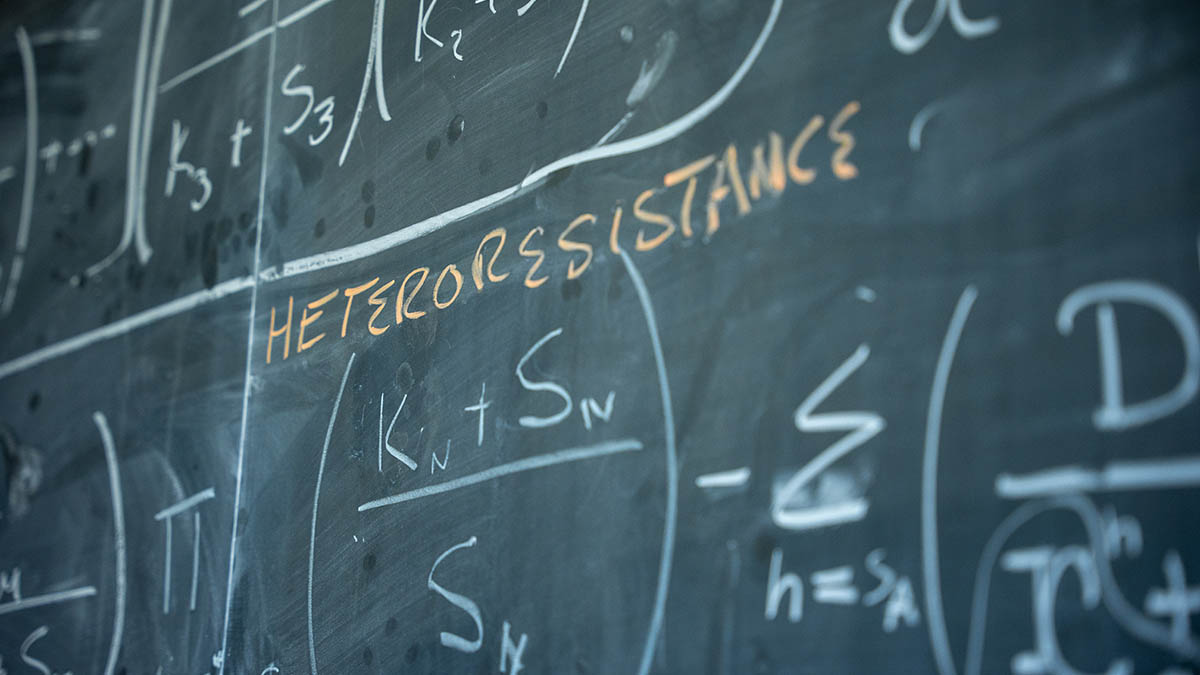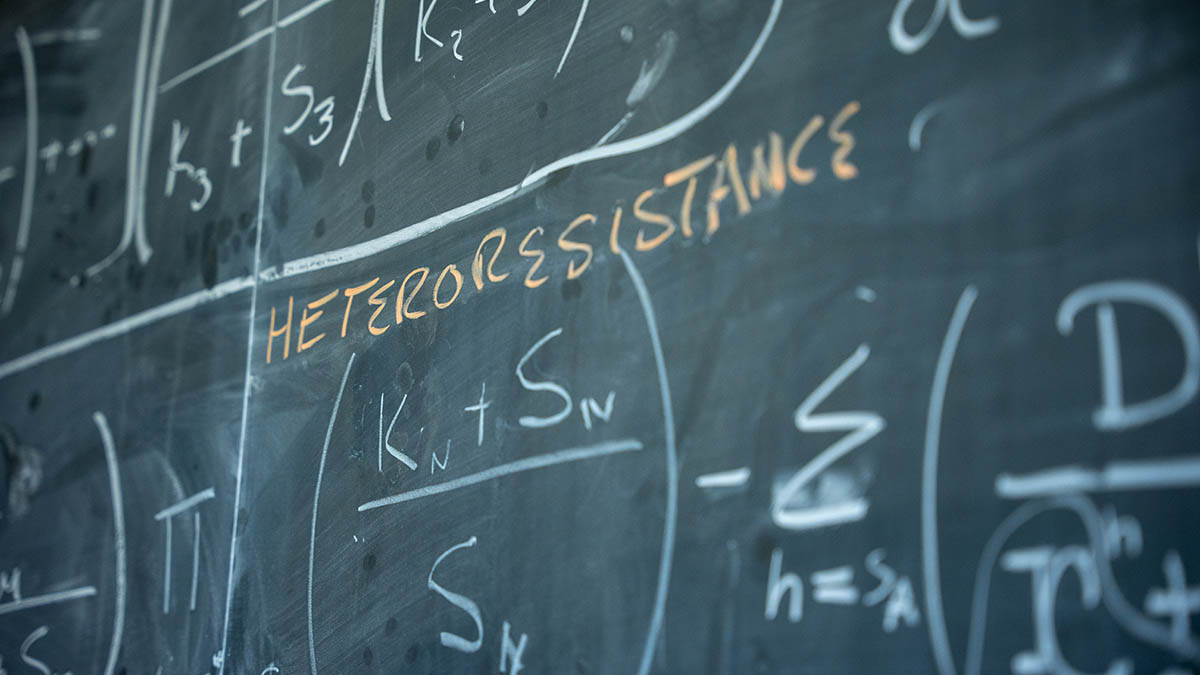Using Mathematics to Tackle Infections
Math Professor Applies Mathematical Models and Machine Learning to Mitigate Infections
Esteban Hernandez-Vargas speaks four languages, but he is not a linguist.
Despite having published virology research in many astute journals, Vargas does not ascribe to a deep background in the natural sciences.
As a faculty member in the Department of Mathematics and Statistical Science, Vargas teaches upper-level courses in calculus, and he was recently awarded two enviable research grants including a $250,000 National Science Foundation grant, and a $600,000 Institute of Health grant.
I watch infections through the eyes of mathematics. Esteban Hernandez-Vargas, assistant professor
The grants support his work unraveling mathematical pathways to better understand two seemingly unrelated outcomes: how cells respond to attacks by viruses and how a regime of different antibiotics taken in measured amounts over time can stymie infections caused by antibiotic-resistant bacteria.

In his office on the third floor of Brink Hall blackboards are scribbled with mathematical formulas that Vargas fine tunes when he is not at a computer screen crunching data into equations used in mathematical biology and machine learning.
Vargas’ work is documented in journal articles going back two decades that include in their headlines the words, “influenza,” “epidemic” and “immune response.”
“I watch infections through the eyes of mathematics,” Vargas said.
That means he dissects data, builds mathematical models, fine tunes hypotheses, adjusts the models and makes predictions – such as how quickly viruses invade cells, spread through the body, potentially overwhelming a system and causing death.
“I refine the mathematical hypothesis based on the results of the biological experiments,” he said.
The experiments are done in the lab by white-coated virologists with whom he works closely, but at a distance. His office is a spartan workplace with a courtyard view in one of the campus’ mid-20th century brown-stone buildings. On a large blackboard the progression of his work is explained in the language of mathematics.
It is one of the languages in which he is fluent. Others include Spanish, English and German.
Born in Mexico, Vargas earned his doctorate in mathematics in Dublin, Ireland, and worked for several years in Germany modeling various aspects of viral infections.
An article in the German language Frankfurter Allgemeine newspaper leads with the headline “New Approach to Flu Diagnostics,” and a news release from the Helmholtz Centre for Infection Research — a publicly funded research institute based in Braunschweig, Germany, where Vargas worked — analyzes immune system reactions through mathematical modeling.
Since joining the Department of Mathematics last year, Vargas has continued his work to better understand how infections can be mitigated. The research contributes to developing public health policies in the event of another worldwide viral outbreak like the pandemic caused by COVID-19.
Although early models created through ordinary differential equations provided valuable information during the pandemic, the time-dependent factors of the immune system — how fast antibodies are produced by cells or when to adjust immune responses — are best tackled through a combination of ordinary differential equations plus machine learning, a powerful computational tool that can integrate the large datasets inherent in complex biological systems.
“We are creating new hybrid models and use mice to test predictions that address a central problem for researchers studying infection biology: how and when to modulate immune responses to mitigate mortality during a lethal respiratory viral infection,” Vargas said.
The work goes hand-in-hand with U of I Professor Tanya Miura’s immunology research. Miura’s lab provides the data that Vargas uses in his computations.
The federal funding will also help Vargas develop a mathematical framework for understanding how bacterial populations evolve and how to schedule antibiotics — using more than one antibiotic at varied intervals over a series of days — to fight infection from antibiotic resistant bacteria.
“The recent rise of innovative therapeutical approaches based on cycling antibiotics presents an exceptional opportunity to tackle antibiotic resistance,” Vargas said. “Scheduling the order and time of antibiotics by trial and error without considering the mechanism-based knowledge of the underlying interactions is largely unexplored.”
Using data sets provided by U of I Professor Klas Udekwu’s lab, Vargas will develop and analyze a new family of mathematical models that delineate general conditions under which a resistant bacterial population will be eradicated by effective cycling of therapeutics.
“Ultimately,” Vargas said, “the expected results could highly impact the predictive modeling and biology field.”
The research could pave the way for better clinical monitoring of influenza and possibly other respiratory infections.
Esteban Hernandez-Vargas
Assistant Professor
Brink Hall 313
208-885-2188
Research: Mathematical Biology, Infection Research, Machine Learning, Applied Mathematics, Control Theory
View Esteban Hernandez-Vargas' profile
Article by Ralph Bartholdt, University Communications.
Photos by Rio Spiering, University Visual Productions.
Published in February 2024.
These projects were funded to Regents of the University of Idaho by the National Science Foundation under award 2315862, with the total project funding of $250,000 of which 100% is the federal share, and by the National Institute of Health under award 1R01GM152736, for $171,789 of which 100% is the federal share.








